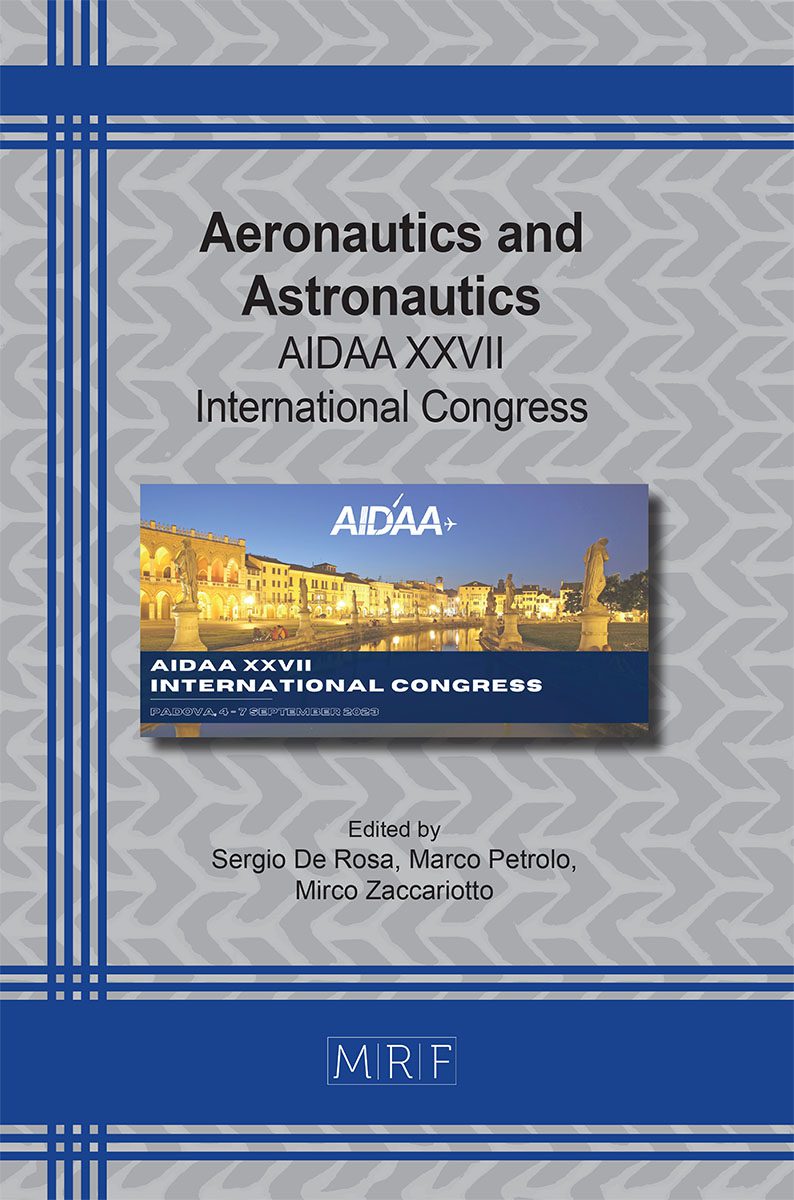Aeroacustics computation based on harmonic balance solution
Luca Abergo, Alberto Guardone
download PDFAbstract. This paper presents a new open-source framework to compute the noise emitted by aerodynamic bodies whose motion is dominated by a specific frequency. This flow behavior is typical of propellers, pitching blades and wind turbines. The reduced order model called harmonic balance is used to compute the unsteady flow solution reducing the computational cost. K frequencies are solved by obtaining the conservative variables at N-time instances inside one period, where N = 2k+1. The time history of the surface flow solution is reconstructed with a Fourier integration. The Kirchhoff Ffowcs Williams Hawkings integral formulation, implemented in SU2, is used to compute the sound pressure level perceived by farfield observers. The integral formulation propagates the acoustic solution with a computational cost independent of observer distance. The noise emittance of a pitching wing is computed with the proposed framework and compared with a fully time accurate solution showing a very good agreement.
Keywords
Aeroacoustics, Harmonic Balance, ROM, FWH
Published online 11/1/2023, 7 pages
Copyright © 2023 by the author(s)
Published under license by Materials Research Forum LLC., Millersville PA, USA
Citation: Luca Abergo, Alberto Guardone, Aeroacustics computation based on harmonic balance solution, Materials Research Proceedings, Vol. 37, pp 10-16, 2023
DOI: https://doi.org/10.21741/9781644902813-3
The article was published as article 3 of the book Aeronautics and Astronautics
![]() Content from this work may be used under the terms of the Creative Commons Attribution 3.0 license. Any further distribution of this work must maintain attribution to the author(s) and the title of the work, journal citation and DOI.
Content from this work may be used under the terms of the Creative Commons Attribution 3.0 license. Any further distribution of this work must maintain attribution to the author(s) and the title of the work, journal citation and DOI.
References
[1] T. D. Economon, F. Palacios, S. R. Copeland, T. W. Lukaczyk and J. J. Alonso, “SU2 An open-source suite for multiphysics simulation and design,” Aiaa Journal, vol. 54, no. 3, pp. 828-846, 2016. https://doi.org/10.2514/1.J053813
[2] P. Di Francestantonio, “A new boundary integral formulation for the prediction of sound radiation,” Journal of Sound and Vibration, vol. 202, no. 4, pp. 491-509, 1997. https://doi.org/10.1006/jsvi.1996.0843
[3] A. Rubino, M. Pini, P. Colonna, T. Albring, S. Nimmagadda, T. Economon and J. Alonso, “Adjoint-based fluid dynamic design optimization in quasi-periodic unsteady flow problems using a harmonic balance method,” Journal of Computational Physics, vol. 372, pp. 220-235, 2018. https://doi.org/10.1016/j.jcp.2018.06.023
[4] L. Abergo, M. Morelli, S. F. Pullin, B. Y. Zhou and A. Guardone, “Adjoint-Based Aeroacoustic Optimization of Propeller Blades in Rotating Reference Frame,” in AIAA Aviation, San Diego, 2023. https://doi.org/10.2514/6.2023-3836
[5] F. Farassat, “Linear Acoustic Formulas for Calculation of Rotating Blade Noise,” AIAA journal , vol. 19, no. 9, pp. 1122-1130, 1981. https://doi.org/10.2514/3.60051
[6] P. Spalart and S. Allmaras, “A one-equation turbulence model for aerodynamic flows,” in 30th aerospace sciences meeting and exhibit, 1992. https://doi.org/10.2514/6.1992-439












